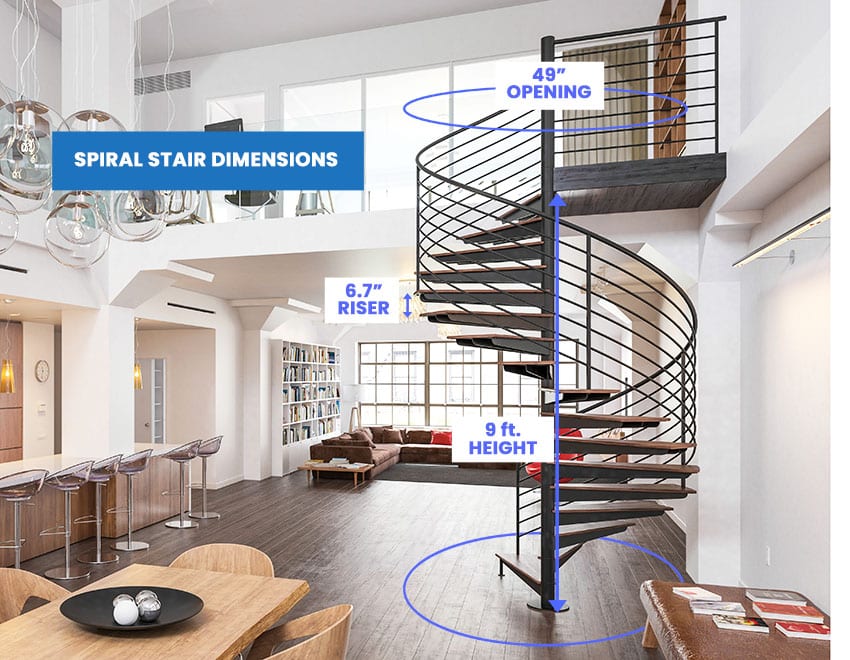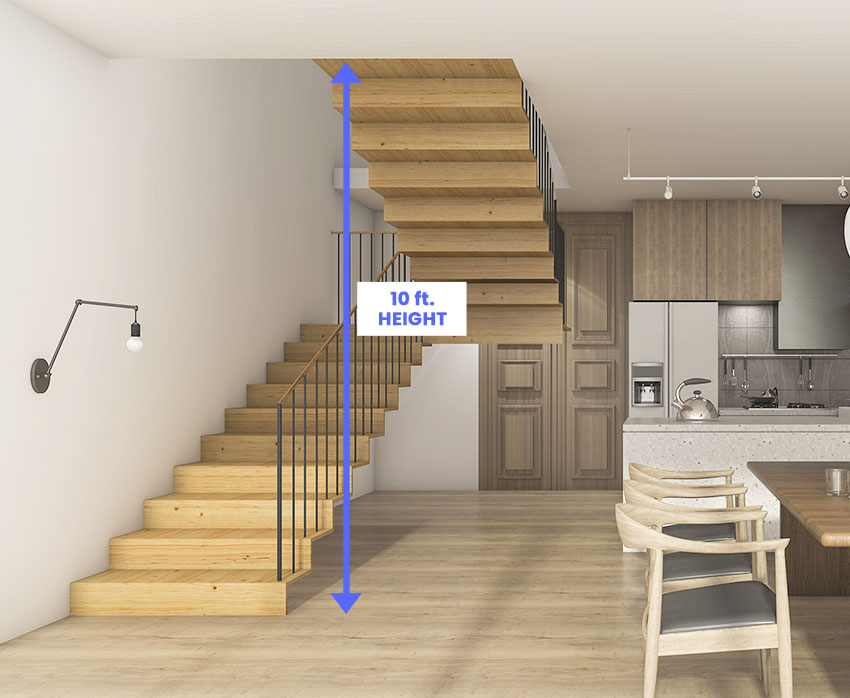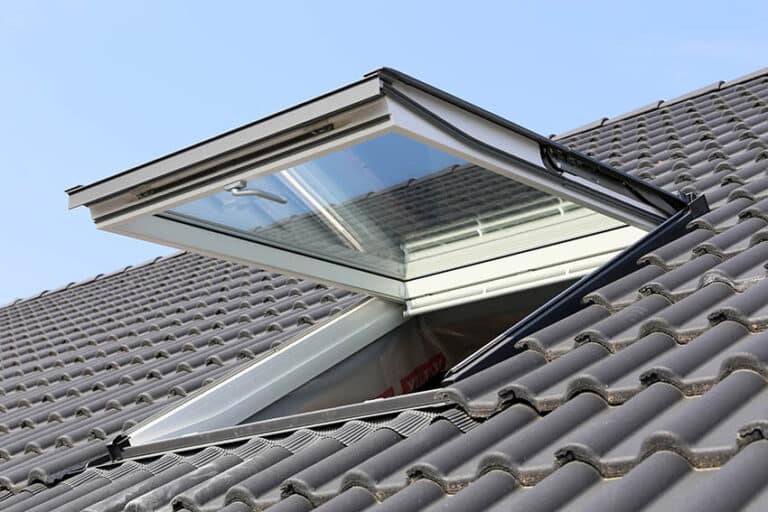Stair Dimensions (Staircase & Railing Sizes Guide)
Here’s our stair dimensions guide including the measurements of a straight-run designs and other different types of staircases & railing sizes.

When building a home with multiple floors, it is integral to know proper stair dimensions. This knowledge will ensure everyone can have the safest way possible as they transcend and descend the stairs. Below, we provide the basic dimensions to consider when planning your staircase.
Standard Stair Dimensions

Straight-run stairs are the standard type in regular and traditional residential homes. They are the easiest to build and also the easiest to climb up and down in.
Standard straight-run stair dimensions have a width of 36 inches or 91.4 centimeters, a tread depth of 11 inches or 28 centimeters, a riser size of 7 inches or 18 centimeters, and a length from the bottom to the top of 10 feet or 3 meters.
Stair Width Dimensions
Stair width is the length of a step from side to side. The (IRC) International Residential Code and other local building codes have a standard, and this standard is usually 3 feet or 36 inches wide or wider. This size does not include the handrails.
The best thing about this is, more often than not, these dimensions are flexible, so if you meet the minimum feet, you can go however wide you want your steps to be, depending on the size of your house, your budget, or your needs.
Stair Tread Dimensions
The stair tread is the horizontal surface where you step on going up and down the staircase. You mark the tread depth by measuring the front edge of the nosing to the other front edge or nosing of the other step.
This distance is measured horizontally and should be at least 10 inches if you have a nosing (a material that slightly increases the depth of a step’s surface). If you don’t have the nosing, the maximum tread length is 11 inches.
Your tread depth should be enough to allow most of your foot to step on the surface. To avoid accidents, it’s essential to get this size right and as accurate as possible, especially when descending the steps.
Stair Stringer Sizes
The stair stringer or the stringer board is what houses the sides of the staircase. It is the sawtooth-shaped sides you can see, but sometimes it may be just one solid straight structure.
The stringer is where the treads and the risers are hooked and settled. The minimum thickness for the stringer to support the structure durably is 3.5 inches.
Stair Riser Sizes
First, we need to know what a stair riser is. A riser is the vertical part of the step. It is the distance where you move your feet up or down the steps.
The distance between each step or riser should not exceed 7 3/4 inches. This standard is set so that the steps aren’t too high or too low to avoid accidents.
If you are opting for open risers for your staircase, you have to make sure that the space does not exceed 4 inches; it should be 4 inches or lower.
Egress Stairway Dimensions

Egress stairs are the type you usually see on building emergency exits. These fire escapes are mandated to be made with non-combustible materials from the handrails down to the nosing.
It is crucial to get the proper and enough width length to move multiple people if needed in an emergency. The correct egress riser height and the appropriate tread depth will ensure safety and usability when people move up and down the steps.
The minimum width of an egress stairway where less than 50 people will move should be 36 inches, or 91.44 centimeters; where more than 50 people and less than 200 people will be transcending the steps it needs to have a width of 44 inches or 111.7 centimeters.
If we are talking about a major building with an occupant volume of 2000 people and above, the width of an egress step needs to be at least 56 inches or 142.24 centimeters.
The minimum riser height for an egress design is 4 inches and can go up to 7 inches, and the tread depth is 11 inches, while the maximum size between landing should have a height of 12 feet.
Spiral Staircase Dimensions

Spiral stairs are a design style that is helical in shape. The treads are attached to a central pole. Spiral designs are great for smaller homes because of their compact size, but they are also dangerously steep because of this. Including a handrail in your spiral design can be an added and necessary precaution.
To consider the dimensions for a spiral staircase, we take into account the dimensions for a standard 12 tread spiral staircase as a benchmark.
A 12-tread spiral staircase rotates 360 degrees. It will have a height of 9 feet or 2.75 meters from the top of the flight to the bottom of the base.
The distance of each riser will be 6.7 inches or 17 centimeters, while the opening will be 49 inches or 1.25 meters long.
Switchback Stair Sizes

Switchback stairs are also called half-turns. They have two straight flights of stairs that turn at a 90-degree angle in the middle. The turn can be used on whatever you want, and it could also have a curved edge.
The standard sizes for this type are a height of 10 ft. or 3 meters from one floor down to the last step and an angle of free space of 36 inches or 91.4 centimeters.
It also has a minimum stair width of 36 inches, a tread depth of 11 inches, and a riser of 7 inches.
Stair Railing Dimensions

The stair railing is a support structure to avoid an accident when people are using the steps. The length could go on and follow your stairs‘ overall size, but the minimum height to support people using them should at least be 36 to 38 inches.
With all the dimensions we have listed for the most basic type of staircases, you must check your local building codes to guarantee that you follow the minimum state protocols. Good luck and happy planning!
See more related content in our article about the different types of stairs here.






